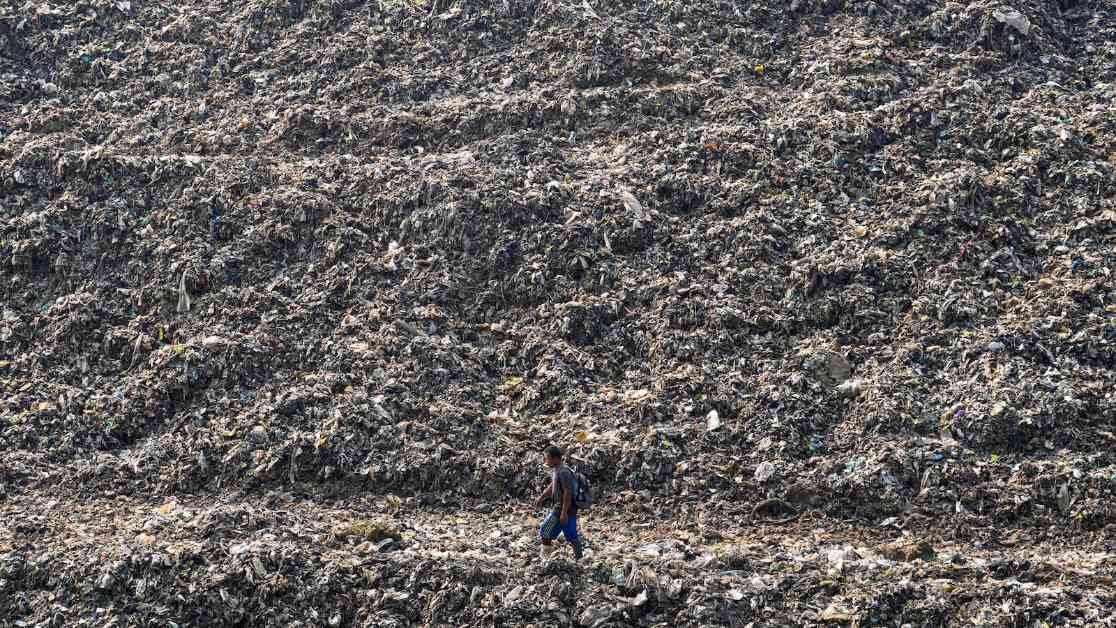Methane Pollution Crisis: Understanding the Causes and Exploring Solutions
The recent study on methane emissions and their impact on climate change has shed light on a growing crisis that is often overshadowed by the focus on carbon dioxide. The findings reveal that the amount of methane being released into the atmosphere has been steadily increasing, contributing significantly to the acceleration of global warming. In 2020 alone, humans emitted 670 million tons of methane, marking a nearly 12% increase from levels recorded in 2000.
The study, published in Environmental Research Letters, also highlighted a concerning trend in the source of methane emissions. While natural emissions from sources like wetlands have only increased by 2% over the past two decades, human-caused emissions have surged by almost 18%. This disparity in growth rates underscores the urgent need to address the root causes of methane pollution.
The Rise of Methane Emissions: A Closer Look
Methane levels in the atmosphere are now more than 2.6 times higher than they were in pre-industrial times, a stark reminder of the impact of human activities on the environment. The study’s lead author, Rob Jackson, emphasized the rapid rise of methane compared to carbon dioxide, noting that while carbon dioxide remains the primary greenhouse gas, methane poses a more immediate threat due to its potent heat-trapping properties.
The major sources of methane emissions include the burning of fossil fuels, large-scale agriculture practices, and landfill operations. These activities release methane into the atmosphere, where it remains for approximately a decade before breaking down. Unlike carbon dioxide, which can linger in the atmosphere for thousands of years, methane presents a unique opportunity for targeted mitigation efforts.
Jackson highlighted the potential for reducing methane emissions to yield quick benefits in the fight against climate change. By addressing the sources of methane pollution and implementing effective strategies to curb emissions, countries and industries can make significant progress towards mitigating the impacts of global warming.
Challenges and Solutions: Addressing the Methane Crisis
Despite the growing recognition of the methane pollution crisis, significant challenges remain in implementing effective solutions. The study’s findings indicate that current trends in methane emissions are putting the world on track for a 3-degree Celsius increase in global temperatures, well above the targets set by the Paris climate agreement.
To limit warming to 1.5 degrees Celsius above pre-industrial levels, drastic reductions in both carbon dioxide and methane emissions are necessary. Jackson emphasized the need for a coordinated global effort to cut carbon dioxide emissions by nearly half and methane emissions by more than one-third to stay within the agreed-upon limit.
One of the key obstacles to reducing methane emissions is the lack of comprehensive action at the international level. While countries pledged to address methane pollution in 2021, progress has been slow, with emissions continuing to rise at an alarming rate. Jackson’s analysis of global methane levels indicates that current mitigation efforts are falling short of their intended impact, underscoring the need for urgent action.
Subheadings:
The Impact of Methane Emissions on Climate Change
Understanding the Sources of Methane Pollution
Challenges and Opportunities in Mitigating Methane Emissions
In conclusion, the rising methane pollution crisis poses a significant threat to the environment and human health. By addressing the root causes of methane emissions and implementing targeted strategies to reduce pollution, countries and industries can make tangible progress towards combating climate change. The urgency of the situation requires coordinated action at the global level to ensure a sustainable future for generations to come.

















